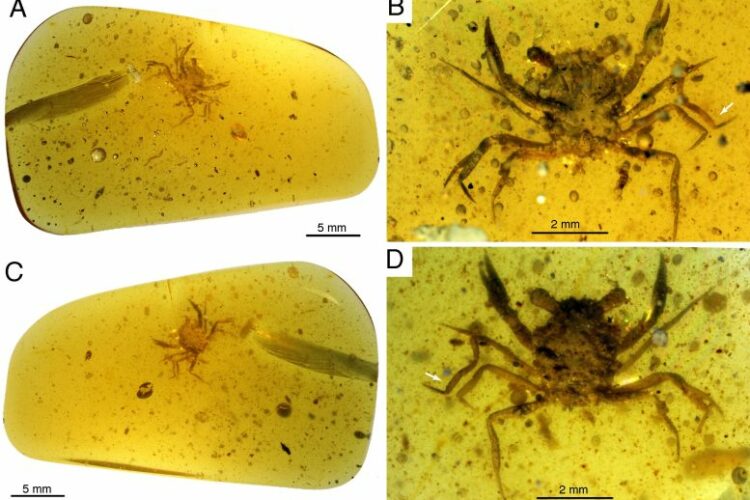During the Cretaceous time frame exactly 100 million years prior, a little shellfish crept out from its marine home and climbed a tree. The crab – just with regards to a large portion of the size of a thumbnail – accidentally become buried in tree sap. For a long period of time, it lay immaculate, until it was found by excavators in the Southeast Asian wilderness in 2015.
In another review, distributed in the diary Science Advances on Oct. 20, specialists detail the substance of the palm-sized lump of golden and the ripped at critter inside. The old scavanger, named Cretapsara anthanata, is accepted to be the soonest “present day looking” crabs at any point found and the most ridiculously complete fossil yet found.
Fossils caught in golden have been among fossil science’s most intriguing finds lately – globs of solidified old tree tar have caught enticing insights regarding bugs, reptiles, infinitesimal creatures, creepy crawlies, birds and surprisingly a minuscule dinosaur that are regularly absent from fossils found in rock.
Nonetheless, this load of animals were sod huggers that you may hope to experience on a tree trunk or branch. Presently, researchers have tracked down the most seasoned amphibian creature protected in golden – and it’s the most incredibly complete crab fossil at any point found.
“It incorporates sensitive tissues like radio wires, mouthparts fixed with fine hairs, huge compound eyes, and surprisingly the gills,” Javier Luque, a Harvard scientist and co-lead creator of the review, said in a public statement.
It’s not strange to discover all way of creepy crawly and vegetation encased inside golden. Old flies, mosquitoes and even tardigrades have been found inside the solidified sap. However, a crab? A for the most part sea-going animal? While it’s normal to see crabs climbing trees today, the fossil record demonstrated their precursors began to slither out of the water around 75 to 50 million years prior.
DNA examination recommended that, maybe, land-based crabs might have separated from their predecessors exactly 125 million years prior. That makes Cretapsara a significant find, conceivably connecting the developmental hole among marine and non-marine crabs. Since the crab has gills and not lungs, it probably didn’t harp ashore but rather may have spent brief periods out of the water.
Obviously, that doesn’t clarify how the crab came to be buried, however the group have created a few speculations. The humble size of the shellfish proposes it could be an adolescent from a land and/or water capable species. There’s additionally potential it was moving onto land, from water, similar to the popular red crabs of Christmas Island. Anyway it arrived, scientistss are currently receiving the benefits, pulling back the drape on crab development.
The scientists believe that Cretapsara was neither a marine crab nor totally land abiding. They figure it would have lived in new water, or maybe saline water, on the woods floor. It was likewise conceivable, they said, that it was moving onto land like the renowned red Christmas Island crabs that discharge their infants into the sea and later multitude back onto land.
While the most seasoned crab fossils date back to the Jurassic time frame in excess of 200 million years prior, fossils of non-marine crabs are scanty and generally inadequate.
The scientists said that Cretapsara demonstrates that crabs took the jump from the ocean to land and new water during the dinosaur period, not during the warm blooded animal time, as recently suspected, pushing the advancement of non-marine crabs a lot farther back on schedule.
“In the fossil record, non-marine crabs developed 50 million years prior, yet this creature is double that age,” said Luque.
Dinosaur-period golden fossils are just found in stores from Kachin State in northern Myanmar, and moral worries about the provenance of golden from the district have arisen lately.
The Society of Vertebrate Paleontology required a ban on research on golden sourced from Myanmar after 2017 when the country’s military assumed responsibility for some golden mining regions.
The creators of this review said the golden example was procured by the Longyin Amber Museum from a merchant in the city of Tengchong close to the boundary with Myanmar in southern China in August 2015.
They trusted by “directing examination on examples gathered before the contention and recognizing the circumstance in the Kachin State will serve to bring issues to light of the current clash in Myanmar and the human expense behind it.”
Disclaimer: The views, suggestions, and opinions expressed here are the sole responsibility of the experts. No Unique Analyst journalist was involved in the writing and production of this article.

